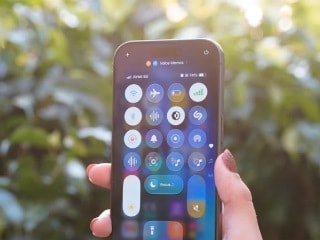- Home
- Mobiles
- Mobiles Reviews
- Vivo Z1 Pro Review
Vivo Z1 Pro Review
With the Z1 Pro, Vivo is bringing the fight to Xiaomi, Samsung, and Realme in the sub-Rs. 20,000 segment

Vivo Z1 Pro price in India starts at Rs. 14,990
Vivo is one of India's biggest and most visible smartphone brands, with a massive offline presence across the country. It's easy to get caught up in the excitement of the flash sales and price wars that many brands engage in online, and now Vivo wants to get in on that action with its first “online focused” device, the new Vivo Z1 Pro, which will be sold on Flipkart. The company is targeting millennial and Gen Z buyers who want good-looking phones with all the latest capabilities, and the Vivo Z1 Pro specifically promises great cameras, battery life, and processing power for games.
It definitely looks as though Vivo studied all the current market trends when designing the Z1 Pro, and on paper at least, it's definitely trying to give Xiaomi, Realme, and Samsung a run for their money. We've got the brand new Vivo Z1 Pro in for review, and we're going to see if the features and specifications it boasts of will be enough to earn it a spot on our next list of recommended phones in the sub-Rs. 20,000 space.
Vivo Z1 Pro design
The first thing you'll notice about the front of the Vivo Z1 Pro is its oversized screen with a hole in the upper left corner for the front camera. This seems to be the next big trend after screen notches of various sizes, and Vivo is right on the ball.
The camera hole isn't too big and it isn't really distracting in everyday use. Vivo shipped us our Z1 Pro review unit with a screen protector attached, and unfortunately this serves to highlight the camera hole with an extra ring around it. The plastic film also picked up a couple of nasty scuffs with ordinary use.
As expected for a sub-Rs 20,000 phone these days, the Vivo Z1 Pro features an eye-catching glossy plastic rear panel with a multi-coloured gradient finish. Our review unit was the Sonic Blue version, which is emerald green at the top fading into cobalt blue at the bottom. The colours are rich and saturated, giving this phone a sort of jewel-tone appearance. It also catches the light as you tilt this phone around. The effect is anything but subtle – the Vivo Z1 Pro is definitely designed to be eye-catching from the front as well as the rear.
The gradient carries over to the frame of this phone, and because it bulges outwards a little, you can see the bright colours around the screen when you're using the Vivo Z1 Pro. Some might like this, but we think it detracts from the borderless screen look that the company was going for. There's also a more subtle Sonic Black option.
![]() The gradient finish on the back of the Vivo Z1 Pro carries over to its frame
The gradient finish on the back of the Vivo Z1 Pro carries over to its frame
The triple-camera module on the rear sticks out just a little bit and extends to include the flash. There's also a standard fingerprint sensor on the back of the Vivo Z1 Pro, positioned just slightly out of reach for us. The power and volume buttons are on the right, and there's a physical Google Assistant button on the left, just below the SIM and microSD card tray.
The Vivo Z1 Pro has two Nano-SIM slots and a separate microSD card slot. The Google Assistant button can't be reassigned to other functions.
We're increasingly disappointed to see Vivo continue to stick with Micro-USB ports on its modern phones, including this one. There's also a 3.5mm headphones socket and a speaker grille on the bottom.
The Vivo Z1 Pro bears a resemblance to the Vivo Y17 (Review), which we reviewed a little while ago, with similar dimensions and styling. The Z1 Pro is actually heavier at 201g but a hair thinner at 8.85mm thick.
In the retail box, you get a flexible plastic case, a pretty bulky 18W charger, a Micro-USB cable, 3.5mm wired headset, SIM eject pin, and some pamphlets.
![]() The Vivo Z1 Pro features three rear cameras
The Vivo Z1 Pro features three rear cameras
Vivo Z1 Pro specifications and software
The big news with the Vivo Z1 Pro is that this is the first phone in India based on the Qualcomm Snapdragon 712 processor. This chip was announced earlier this year as an improvement over the Snapdragon 710, and is built on a 10nm process. It features six 1.7GHz Kryo 360 Silver cores tuned for efficiency and two 2.3GHz Kryo 360 Gold cores for power, along with integrated Adreno 616 graphics and an X15 LTE modem.
Vivo is boasting of up to 10 percent better performance than the Snapdragon 710 and 25 percent better performance than the Snapdragon 660. The company is clearly targeting buyers who enjoy digging deep into specifications to make informed purchase decisions.
You have a choice of three variants with the Vivo Z1 Pro: 4GB of RAM with 64GB of storage (Rs. 14,990), 6GB of RAM with 64GB of storage (Rs. 16,990), and 6GB of RAM with 128GB of storage (Rs. 17,990). The screen measures 6.53 inches diagonally and has a full-HD+ 1080x2340 resolution.
The Vivo Z1 Pro also packs a 5000mAh battery and support for Vivo's own Dual Engine Fast Charging tech. There's dual-band Wi-Fi and Bluetooth 5, along with GPS, but no NFC or FM radio. You get all the usual sensors plus a gyroscope and e-compass.
Vivo's phones run Funtouch OS, a very heavily modified UI for Android 9. A lot of things are changed around, compared to stock Android, and not all of them for the better. You can read about it in great detail in our recent review of the Vivo Y17, since the experience is pretty much identical on both phones, down to the old-fashioned Android UI navigation buttons and the large number of preinstalled apps.
We aren't fans of the iOS-like Shortcut Center with all the quick settings toggles that you have to pull upwards from the bottom of the screen, or the highly modified Settings app that has even commonly used settings in unusual places. If you like stock Android or similar skins with feature additions such as OxygenOS, you won't much care for Funtouch OS.
One of the highlights of Funtouch OS is a game enhancement that Vivo calls Game Mode in its promotional materials but is also referred to as Game Cube and Game Box in different places in the UI. This now includes specific optimisations for PUBG Mobile including “4D vibrations and 3D surround sound” as well as a countdown feature that lets you do other things while you wait for your next round to begin.
There's also an esports mode that can kill all background apps, block notifications, and disable temperature throttling to maximise performance. According to Vivo, more features including voice chat filters are to be added in future updates.
![]() The Vivo Z1 Pro has two Nano-SIM slots and a separate microSD card slot
The Vivo Z1 Pro has two Nano-SIM slots and a separate microSD card slot
Vivo Z1 Pro performance, battery life, and cameras
The great thing about competition driving prices down is that today's budget smartphones have more than enough power for everyday usage situations. We never felt any slowdowns or hesitation when using the Vivo Z1 Pro. Despite its heavy modifications, Funtouch OS did not seem to be causing any performance issues at all. Our review unit was the middle variant with 6GB of RAM and 64GB of storage.
The Vivo Z1 Pro's display is very sharp and legible in all conditions. Viewing angles are great, but we think that some people will find that colours aren't as vivid as they are on competing phones with AMOLED panels. You can adjust the colour temperature and there's a system-wide dark mode, though not all third-party apps can recognise this and adapt.
The status bar at the top of the screen is thick enough to enclose the front camera hole when using the Funtouch OS UI and in most apps that don't go full-screen. We did find it a little distracting when watching videos on the Vivo Z1 Pro. A quick diagnostic showed that this phone only supports Widevine L3 DRM, which means you can't stream HD content from services like Netflix.
The single speaker on the bottom of this phone is quite loud, but sound tends to distort at high volume. The bundled headset looks like Apple's Earpods but the sound is only just about okay for calls. Music sounded hollow and lifeless through it.
The Snapdragon 712 processor gives the Vivo Z1 Pro slight edge on paper and will appeal to those looking for the latest and greatest at this price, but it's hard to tell how much of a difference it makes with everyday use. Our benchmarks, on the other hand, can help establish that.
![]() The Vivo Z1 Pro features a Qualcomm Snapdragon 712 SoC and 5000mAh battery
The Vivo Z1 Pro features a Qualcomm Snapdragon 712 SoC and 5000mAh battery
The Vivo Z1 Pro scored 184,384 points in AnTuTu, and the Geekbench single-core and multi-core tests were 1,856 and 5,950 respectively. This phone pushed 58fps in GFXBench's T-rex test and 24fps in the Manhattan 3.1 test. 3DMark Sling Shot gave us 2,957 points while Ice Storm Unlimited managed 29,135 points.
Compared to the Realme 3 Pro (Review) and Oppo R17 Pro (Review) which both feature the Snapdragon 710 processor, CPU-heavy benchmark scores are a fair bit higher while GPU-centric tests showed slight improvements. This is good news for those who hang on to their phones for a few years before upgrading, and definitely gives Vivo some bragging rights.
The camera dot didn't interfere with full-screen gaming, as it was nearly always covered by our thumb anyway. It does create a dead zone, and software developers are going to have to work such things into their UIs as this feature becomes more common on phones.
Both PUBG Mobile and Asphalt 9: Legends ran smoothly at high settings on the Vivo Z1 Pro and were enjoyable. The phone got only slightly warm.
Battery life was also very good. We were able to use the Z1 Pro for over a day and a half, and that involved quite a bit of 4G data use, streaming some video, taking lots of photos, and playing games for about an hour. The Vivo Z1 Pro ran our HD video loop test for 18 hours, 32 minutes before finally shutting down automatically.
The 18W charger included with the Vivo Z1 Pro is very quick, and we were surprised to see Vivo's Dual Engine Fast Charging kicking in when using third-party chargers as well. However, this phone does get quite warm when charging quickly.
The triple rear camera module consists of a main 16-megapixel camera with an f/1.78 aperture, an 8-megapixel wide-angle camera with an f/2.2 aperture, and a 2-megapixel depth sensor. The single front camera on the Vivo Z1 Pro has a 32-megapixel sensor and f/2.0 aperture.
Vivo's camera app UI takes a little getting used to. The button to switch between the primary and wide-angle cameras is small and easy to miss. There's also another toggle to enable depth effects rather than having a separate Portrait mode. We found ourselves having to check both these toggles before taking a shot to avoid using the wrong mode without realising it. In the video mode, the slow-mo and time lapse options are hidden in a menu in a completely different place.
We were fairly impressed with the photos that the Vivo Z1 Pro took. Colours popped nicely and there was a lot of detail in the focus areas of our sample shots. The camera was snappy, even with HDR kicking in automatically. Natural and artificial textures looked great in most cases.
Wide-angle shots taken with the secondary rear camera were much less crisp and looked over-processed. There was also slight warping at the edges of the frame. Enabling the depth effect, we were able to take some nice shots with smooth background blurring, though edge detection wasn't perfect all the time. You can adjust the level of blur after taking a shot, in Vivo's own Albums app.
![]()
![]()
![]()
![]() Tap to see full-sized Vivo Z1 Pro camera samples
Tap to see full-sized Vivo Z1 Pro camera samples
Night-time performance was also good. Noise was under control and colours weren't lost, although detail was a little murky on objects at a distance. There was some blur with moving objects, as expected.
Video is unfortunately recorded at 1280x720 by default, and at that resolution it is a little grainy, though at least it's still bright. You can shoot at up to 4K 30fps with the Vivo Z1 Pro. Vivo doesn't say anything about video stabilisation on this phone's spec sheet, and we found that videos recorded while walking were extremely shaky. You can't switch between the standard and wide-angle lenses while shooting a video.
The front camera takes decent shots, which will be more than enough for people looking to share selfies on social media. There's no depth effect or portrait mode but you can apply lighting effects, which are somewhat like subtle filters.
![]() There's a Micro-USB port and a 3.5mm headphones socket at the bottom of the Vivo Z1 Pro
There's a Micro-USB port and a 3.5mm headphones socket at the bottom of the Vivo Z1 Pro
Verdict
Overall, Vivo seems to have done a very good job with the Z1 Pro. When we reviewed the Vivo Y17 not too long ago, we said it was outclassed in its price band. The Vivo Z1 Pro fixes its shortcomings at roughly the same price level.
This phone has nearly every current-day feature and selling point that we can expect on a phone priced below Rs. 20,000, most notably the hole-punch front camera and three rear cameras. Vivo has managed to deliver competitive specifications, and we really don't think there's anything major missing that any other company offers right now.
The Vivo Z1 Pro is a strong all-rounder and is definitely worth considering if you have your eyes on the Xiaomi Redmi Note 7 Pro (Review), Samsung Galaxy M40 (Review) or Galaxy A50 (Review), or Realme 3 Pro (Review). Some people might not be fans of Funtouch OS, and we do think that there's scope for improvement there. However, this phone scores very well in terms of performance and battery life, and offers a big display with a modern-looking punch-hole camera as well.
Vivo Z1 Pro, Redmi Note 7 Pro, Samsung Galaxy M40, or Realme 3 Pro: Which is the best phone under Rs. 20,000? We discussed this on Orbital, our weekly technology podcast, which you can subscribe to via Apple Podcasts or RSS, download the episode, or just hit the play button below.
Catch the latest from the Consumer Electronics Show on Gadgets 360, at our CES 2026 hub.
Related Stories
- Samsung Galaxy Unpacked 2025
- ChatGPT
- Redmi Note 14 Pro+
- iPhone 16
- Apple Vision Pro
- Oneplus 12
- OnePlus Nord CE 3 Lite 5G
- iPhone 13
- Xiaomi 14 Pro
- Oppo Find N3
- Tecno Spark Go (2023)
- Realme V30
- Best Phones Under 25000
- Samsung Galaxy S24 Series
- Cryptocurrency
- iQoo 12
- Samsung Galaxy S24 Ultra
- Giottus
- Samsung Galaxy Z Flip 5
- Apple 'Scary Fast'
- Housefull 5
- GoPro Hero 12 Black Review
- Invincible Season 2
- JioGlass
- HD Ready TV
- Laptop Under 50000
- Smartwatch Under 10000
- Latest Mobile Phones
- Compare Phones
- OPPO Reno 15 FS
- Red Magic 11 Air
- Honor Magic 8 RSR Porsche Design
- Honor Magic 8 Pro Air
- Infinix Note Edge
- Lava Blaze Duo 3
- Tecno Spark Go 3
- iQOO Z11 Turbo
- Lenovo Yoga Slim 7x (2025)
- Lenovo Yoga Slim 7a
- Lenovo Idea Tab Plus
- Realme Pad 3
- Moto Watch
- Garmin Quatix 8 Pro
- Haier H5E Series
- Acerpure Nitro Z Series 100-inch QLED TV
- Asus ROG Ally
- Nintendo Switch Lite
- Haier 1.6 Ton 5 Star Inverter Split AC (HSU19G-MZAID5BN-INV)
- Haier 1.6 Ton 5 Star Inverter Split AC (HSU19G-MZAIM5BN-INV)
















